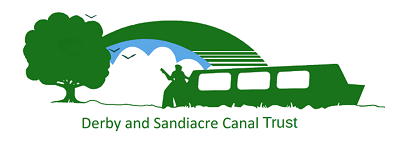There is a much more positive note from the Trust in that we have increased the number of directors and interested parties. We have added to the Board of Directors new MP Jessica Lee, Local Councillor Val Clare and Derbyshire County Councillor Wayne Major. We have also been in discussion with most of the new MPs to promote the cause with encouragement being received.
Several months ago we received a presentation from local architect Mike Wood, who drew up the plans for Spondon Tip’s development. Since then Mike has been appointed to the Trust as official consultant and has been instrumental in getting general agreement from Derby City Council that we are eligible for S106 money. He has also helped to improve the prospects for sponsorship and support from local developers and businesses. Watch this space.
When we have planning permission this is what we will need to focus on next to put some of the canal into water.
As you can see we have an AGM imminent and are always looking out for people with an interest in our success. We have a very strong committee, but we would welcome any involvement or help that can be offered by any member. Please let a committee member know if you can help.
Interview with a Derby Canal Director.
Most of you who have seen the GF Tomlinson’s logo will see three builders looking at a set of plans. What you may not realise is that the plans may be of the Derby Canal. GF Tomlinson set up his contracting business in 1896 and joined the canal board early in the 1900s. When it came to the 1960s his grandson Peter Tomlinson had assumed the director’s mantle and when the canal was no longer commercially viable it fell to him to fill it in.
I had been invited to a neighbour’s for drinks at Christmas and somehow the topic of the Derby Canal had been introduced. I asked whether anyone remembered the canal and quickly found out that Peter, who lives across the road, was the man who closed it down. There seemed a certain irony that the man trying to undo his work was living so close, but he seemed to bear me no ill will.
Seizing the opportunity I was invited across at a later date to hear how he was involved. Peter’s father had handed over the directorship to him in 1956 when he was 30. It was apparent that the canal was becoming a liability and the liability to keep it open was too great. The Long Bridge was looking very precarious and a flood washed away a proportion of it. This seemed to accelerate the need to close the canal down and Peter was appointed to fill it in.
Peter admitted that this was quite unusual, but the canal company had decided to return the route to agricultural use so simple abandonment was rejected and Peter set about the cut and fill approach to filling it in. Bridges were removed or lowered where appropriate. They started in the open land around Draycott and worked eastwards, then came back and worked westwards through Borrowash and Spondon and then heading south. Agricultural areas were tackled first.
As we already know it isn’t only prime agricultural soil that was used.
At Borrowash the lock cottage was bulldozed into the lock chamber after the gates had been removed. Peter recalls that drainage was an important consideration – a point well recognised when the rail mainline flooding at Draycott was only resolve by reinstating a ditch in place of the original canal. The project took over five years to complete and at the end of that the company was dissolved and the land became the councils’ responsibility.
Be assured though that we received his best wishes for a successful restoration and he did say that as far as he is concerned there was no nasty waste used as infill.
